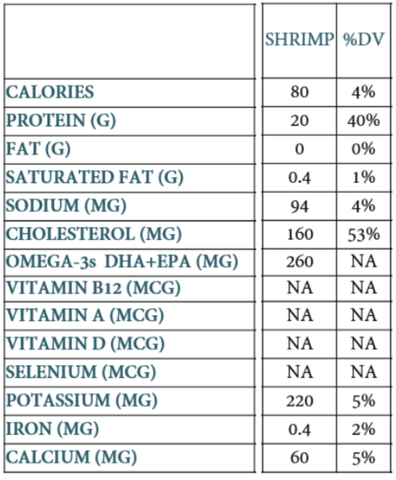All About Our Spot Prawn
Product Info

Spot Prawns
- Caught: October
- Location: SE Alaska
- Method: Pots
- Individually water glazed and freezer sealed, shell on, don’t need to be deveined
- 5 lb box dimensions: 10 ½” x 10 ½” x 4¾”
- Generally holds over 18 months
- Please note! It is normal for spot prawns to have roe (eggs) attached under their bellies. Roe can be prepared for many traditional dishes, but if you prefer not to utilize the eggs, just wash them off.
All About Spot Prawns
“Prawn” began as a common name for small aquatic crustaceans with an exoskeleton and ten legs, referring specifically to a different infraorder of Decapoda than “shrimp.” Prawns originally referred to the Penaeidae infraorder while shrimp referred to the Caridea infraorder. The two are closely related and appear similar throughout their various species. Over time, through cultural and contextual mingling, the terms have become commonly interchangeable. In the United States especially, prawn has become a term to imply a shrimp of larger variety.
Such is the case with the Spot Prawn, which is a member of the infraorder Caridea; a “true shrimp.” Spot Prawns are the largest shrimp found in the North Pacific, ranging from Alaska down to Baja California, from the Sea of Japan to the Korea Strait. They live in the bottom-most regions of their waters and can grow up to 25 cm, or over twelve inches long. They are opportunistic eaters, and feed on other shrimp, worms, sponges, small molluscs, fish parts, and plankton.
The Spot Prawn is reddish with longitudinal white stripes across its head and front legs with a distinctive white spot on the sides of the first and the fifth abdominal segments. Their antennae are striped dark and light shades of red. The abdomen is smooth and shiny but the head and front legs are covered with a fuzzy layer of short, fine, stiff, bristle-like “setae.”
It’s a general rule that no Spot Prawn you consume will be male (due to age restrictions), while there is a 100% chance that it has been a male! Females carry eggs on their abdomen for 4-5 months, the eggs hatching around March and settling as larvae by June. Juveniles feed in shallow waters during the summer and develop into males by the fall--a year within their conception. Mating occurs around October. Adults remain males until their upper shell grows to 3.3 cm at length, usually entering their third year--then they become females.
A popular harvesting method in fisheries across the world has been, and in some cases still is, bottom trawling--one of the most destructive ways to catch fish. Bottom trawlers drag giant nets responsible for up to half of the world’s bycatch (unintentional catches). According to a 2014 study by Oceana, bottom trawling for spot prawns threw away nine times as much bycatch as did more selective fishing gear. Sourcing shrimp responsibly is of great importance to the health of our oceans!
Alaska Select’s Spot Prawn
Bottom trawling was banned in Alaska in 2005 to protect over 300,000 square miles of Pacific waters. Alaskan Prawn (the Spot Prawn of Alaska) “pot fisheries” use more selective and less impactful gear. The fishermen spread baited traps, or pots, out across the ocean floor near rock piles, crevices, coral, sponges, or boulders, finding the greatest concentrations of prawns around 60 fathoms, or 360 feet. The harvest season generally starts in May and lasts anywhere from six to eight weeks.
The Alaska Department of Fish and Game (ADFG) says of shrimp:
“Unfortunately, the vast majority of shrimp consumers do not know that the unsustainable production and harvest of shrimp is devastating ecosystems and local communities. Moreover, they have no way of identifying or ordering sustainably produced shrimp in a restaurant or supermarket. There is a critical need to establish an ecologically certified, sustainable shrimp fishery that can be used to educate consumers, shift seafood demand to more ecologically sound products, and dramatically reduce demand for unsustainable products.”
The conscious shrimp-consumer’s responsibility lies in reducing their habit to solely environmentally sound sources. The pot fisheries in Southeast Alaska (where Alaska Select sources its Spot Prawns) have grown since the 1990s and are now capped and stable with most of the harvest coming from the southern and central Southeast, according to ADFG.
Health Benefits of Alaskan Spot Prawns
A “true shrimp,” Spot Prawns are high in amino acids, selenium, iodine, omega-6 and omega-3 fatty acids, as well as astaxanthin antioxidants.
- Selenium acts as a powerful antioxidant, supporting liver function, in turn detoxifying and clearing potentially harmful compounds such as pesticides, drugs, and heavy metals from the body. Selenium reduces risk of chronic diseases like heart disease, Alzheimer’s disease and cancer, combating premature aging and risk of stroke.
- Amino acids are the building blocks of protein, needed for the development of tissues in the body, including muscles. They are the precursors to hormones, immune response, repair, and other molecular essentials for health.
- Iodine is facilitates proper thyroid function and benefits brain function.
- Omega-6 fatty acids often get a bad wrap, since the modern diet is generally high in Omega-6s and our health depends on its balance with Omega-3s. Both omega-6 and omega-3 fatty acids are essential. Research suggests that the ratio of these fats in our diet may be more important that than the amounts.
- Omega-3 fatty acids provide cardiovascular benefits such as preventing erratic heart rhythms, aiding blood flow inside arteries where clots can cause heart attacks, and balancing the ratio of good High Density Lipoprotein (also preventing atherosclerosis). Omega-3s reduce triglycerides, a potentially harmful fat in our bloodstream. Omega-3s also reduce inflammation, which is a key component in the processes that turns cholesterol into artery-clogging plaques.
- Astaxanthin is a component of algae, which is consumed by shrimp and responsible for their reddish color. Astaxanthin consumption is suggested to help prevent free radicals from damaging cells (as an antioxidant). Recent studies suggest astaxanthin helps strengthen the arteries, reducing the risk of heart attacks. It has anti-inflammatory properties that may prevent damage to brain cells, such that lead to memory loss and neurodegenerative diseases.
Up-to-date nutritional value of Alaskan Spot Prawns (2019), based on a 3 oz (⅔ cup, or 85g) serving serving size:

Culinary Profile of Alaskan Spot Prawns
In preparation, prawns is best thawed out in refrigerator overnight, or in a lukewarm water bath 1-2 hours before use. The shells can be removed before or after cooking (and are more easily peeled once cooked). Prawns can be prepared in the many traditional ways of most shrimp--the most important consideration is to avoid overcooking. Whether stirring in a hot pan or flipping on the grill, one to two minutes (or until the prawns barely turn pink) is a good guideline for beginners. It is also common to steam spot prawns. Some spot prawns still have their roe, or eggs, attached to their underbellies. They can easily be removed and discarded, but are commonly considered a rich treat.
Shrimp is commonly consumed simply prepared in butter and garlic (or other spices) and dipped in a variety of sauces, as an appetizer or shared plate. Shrimp is commonly a staple in a variety of dishes from all over the world, such as different pastas, rice dishes (such as paella), and salads.
Check out our spot prawn recipes.
